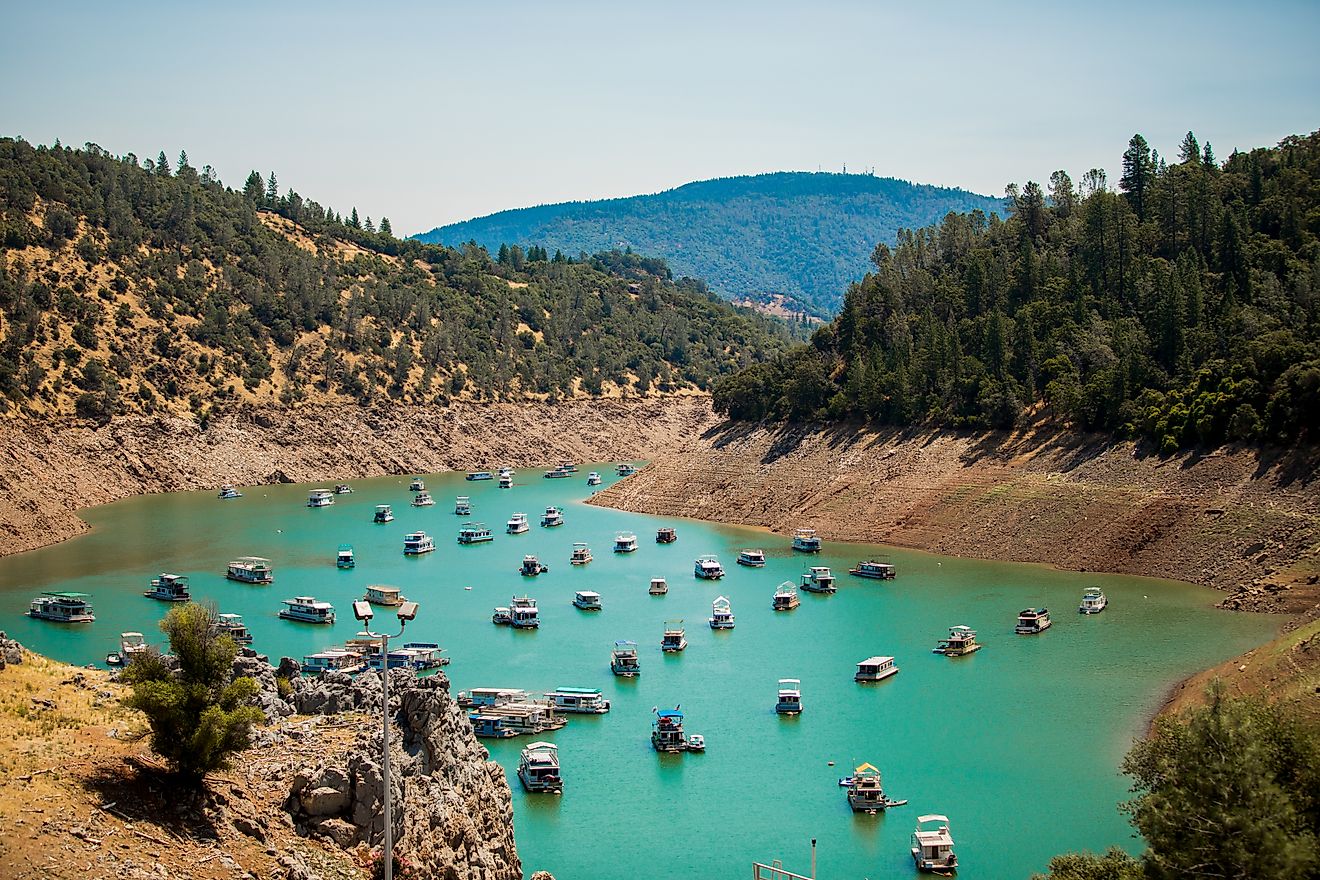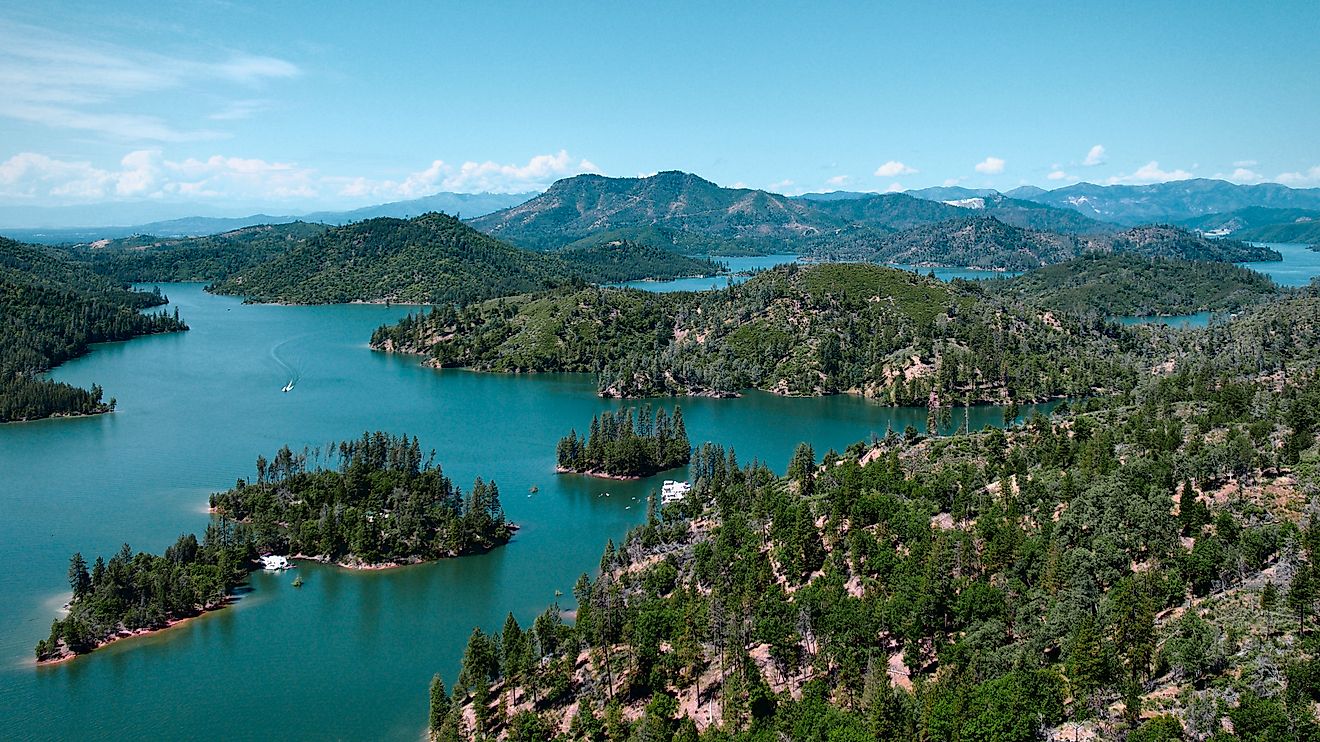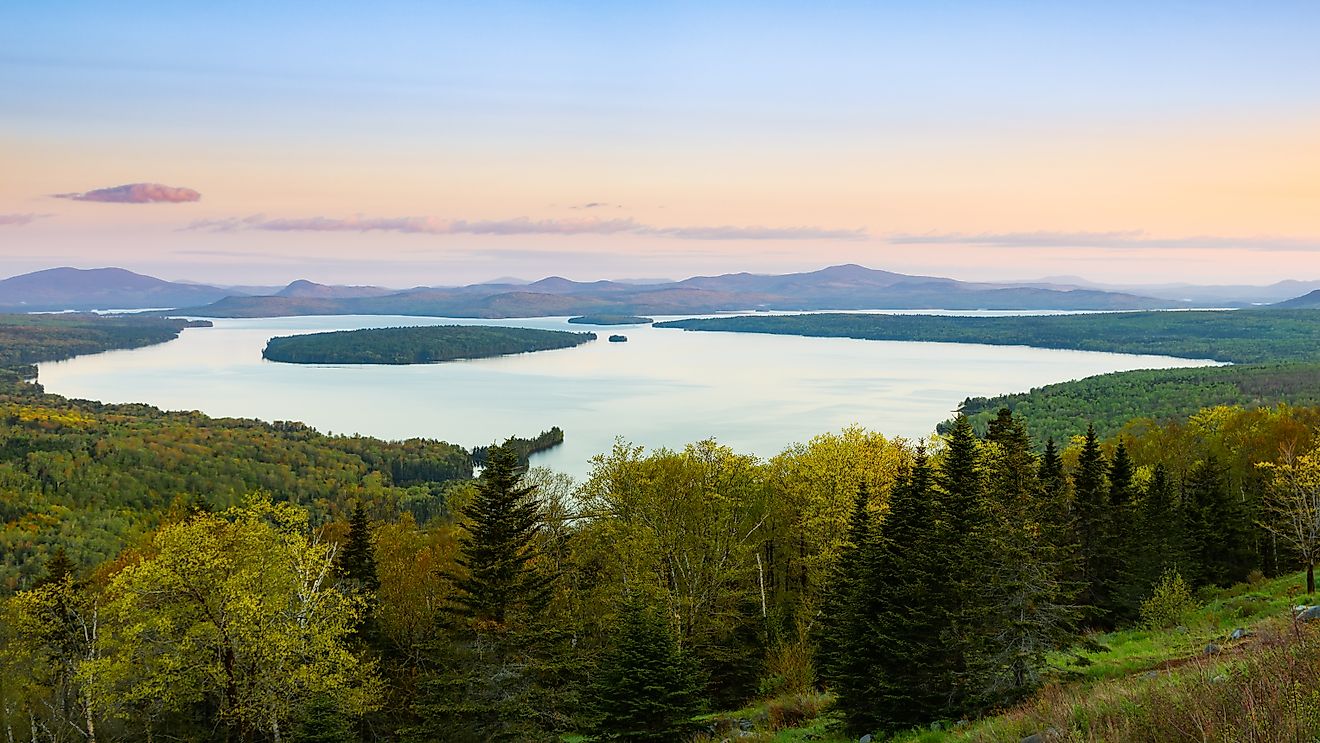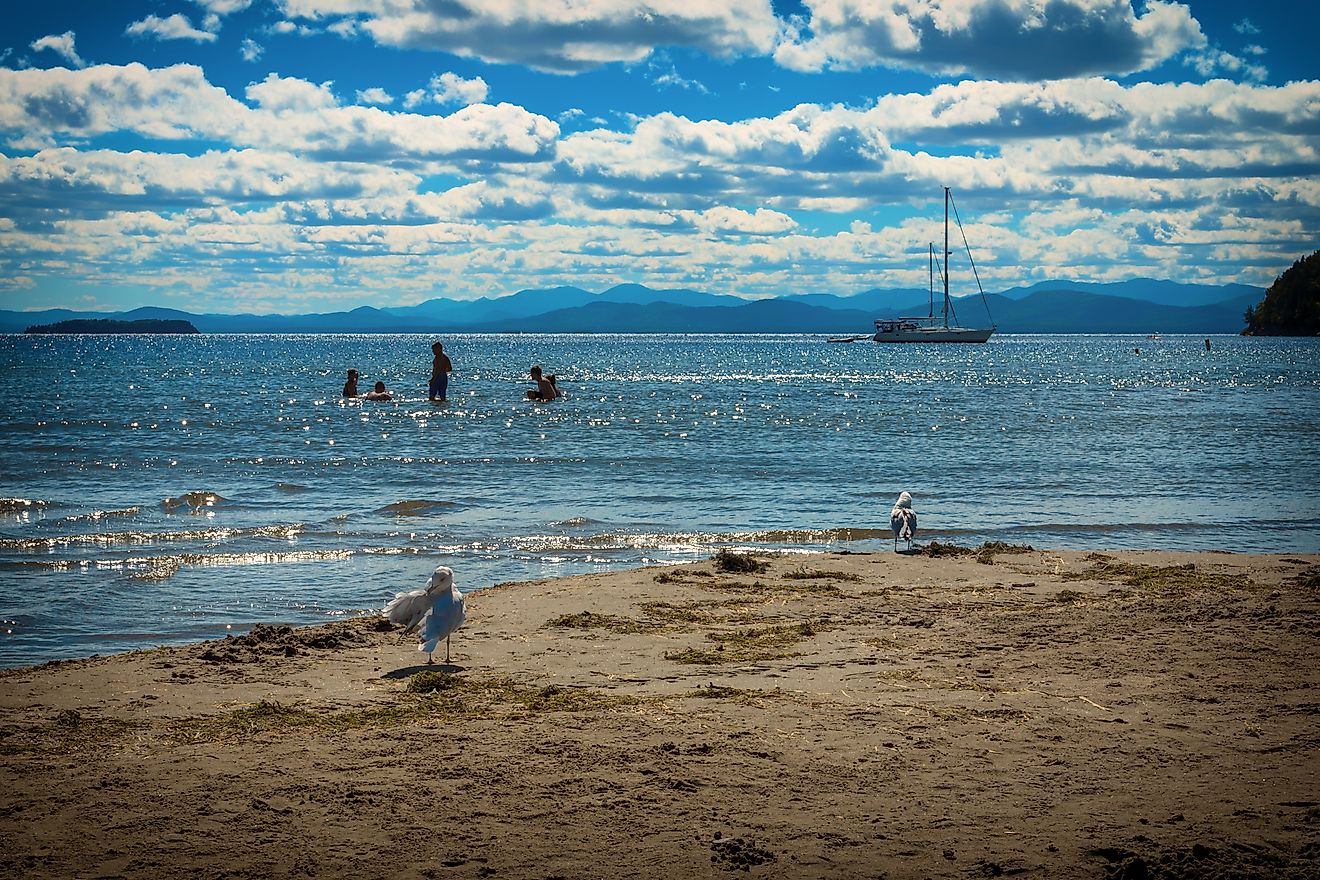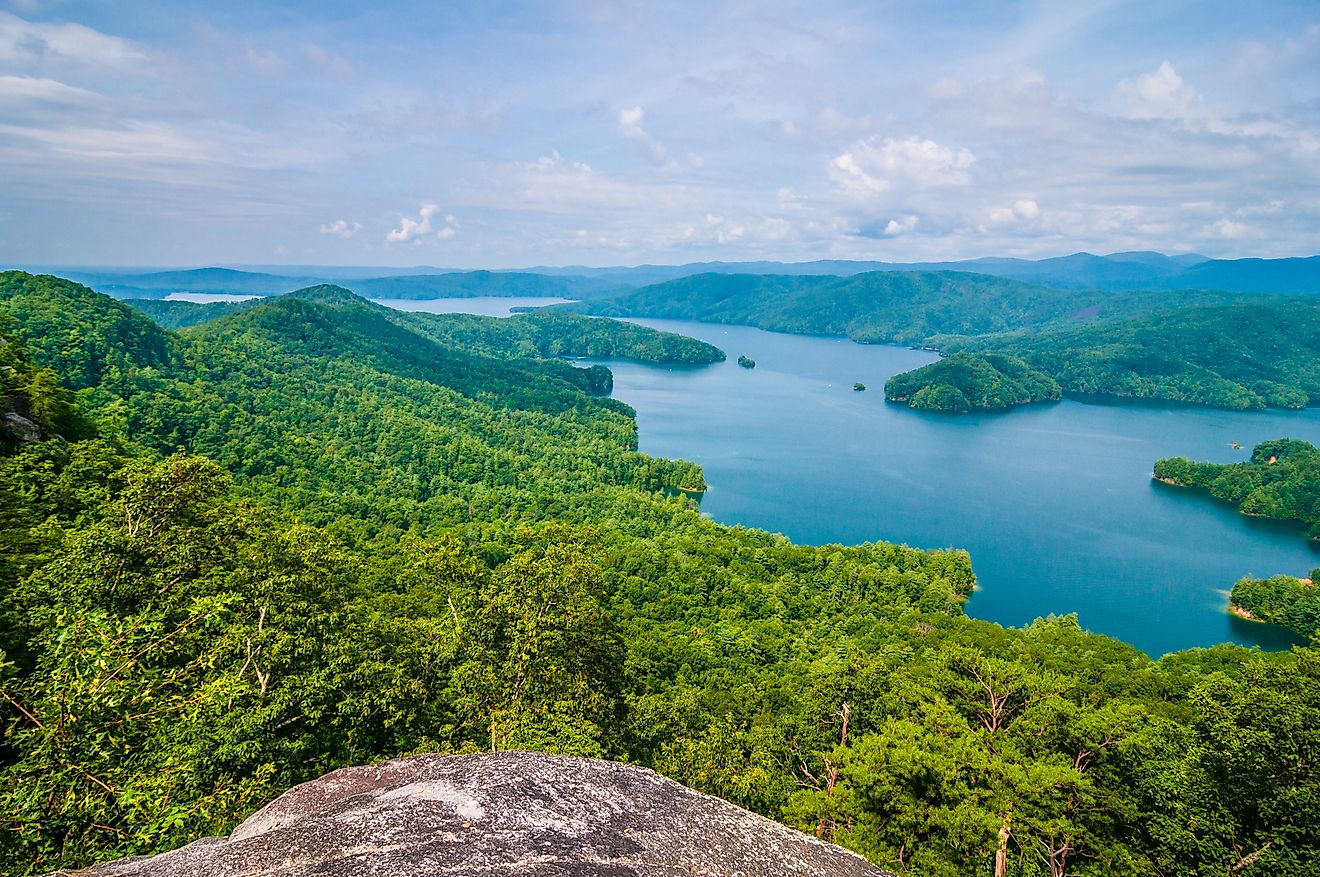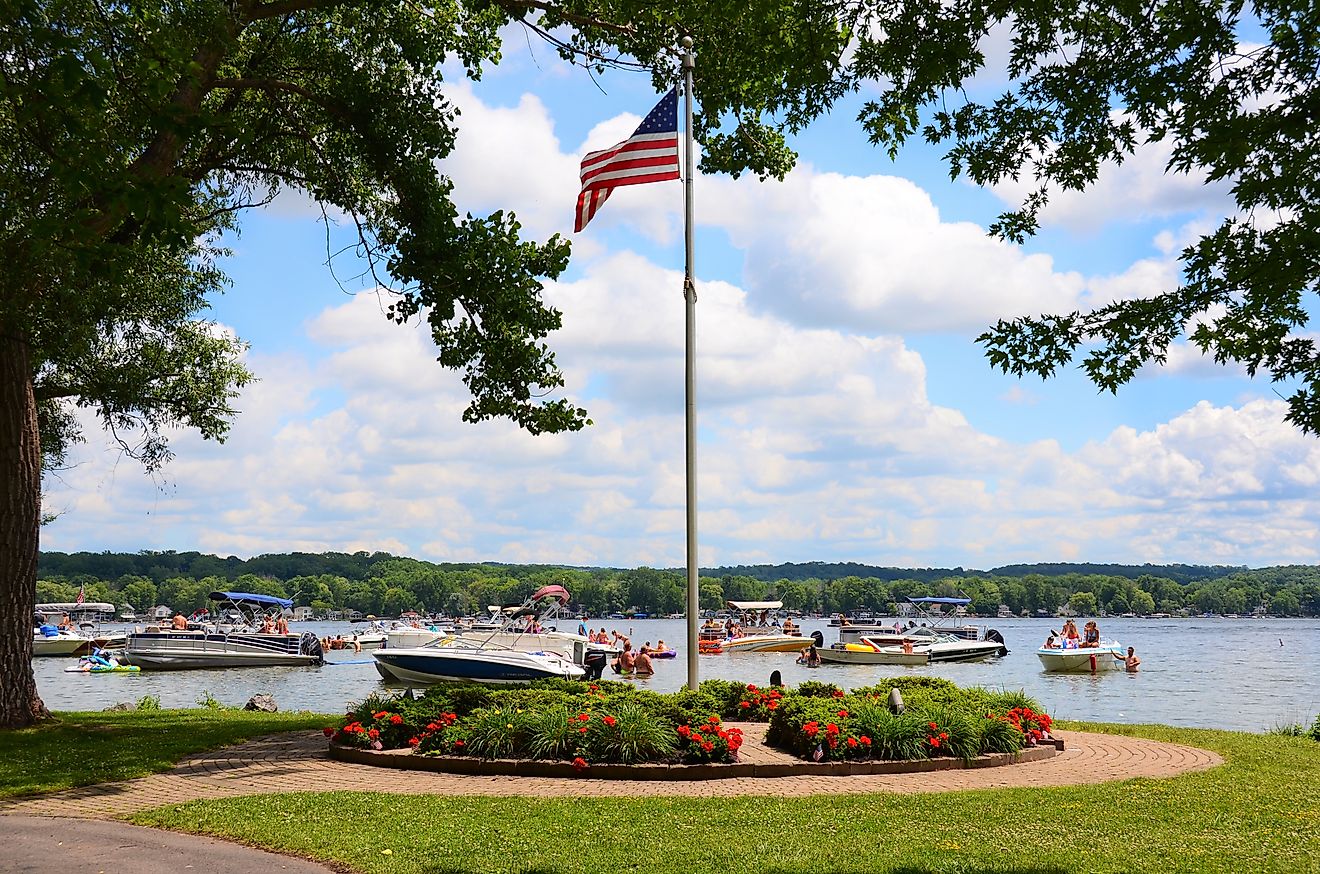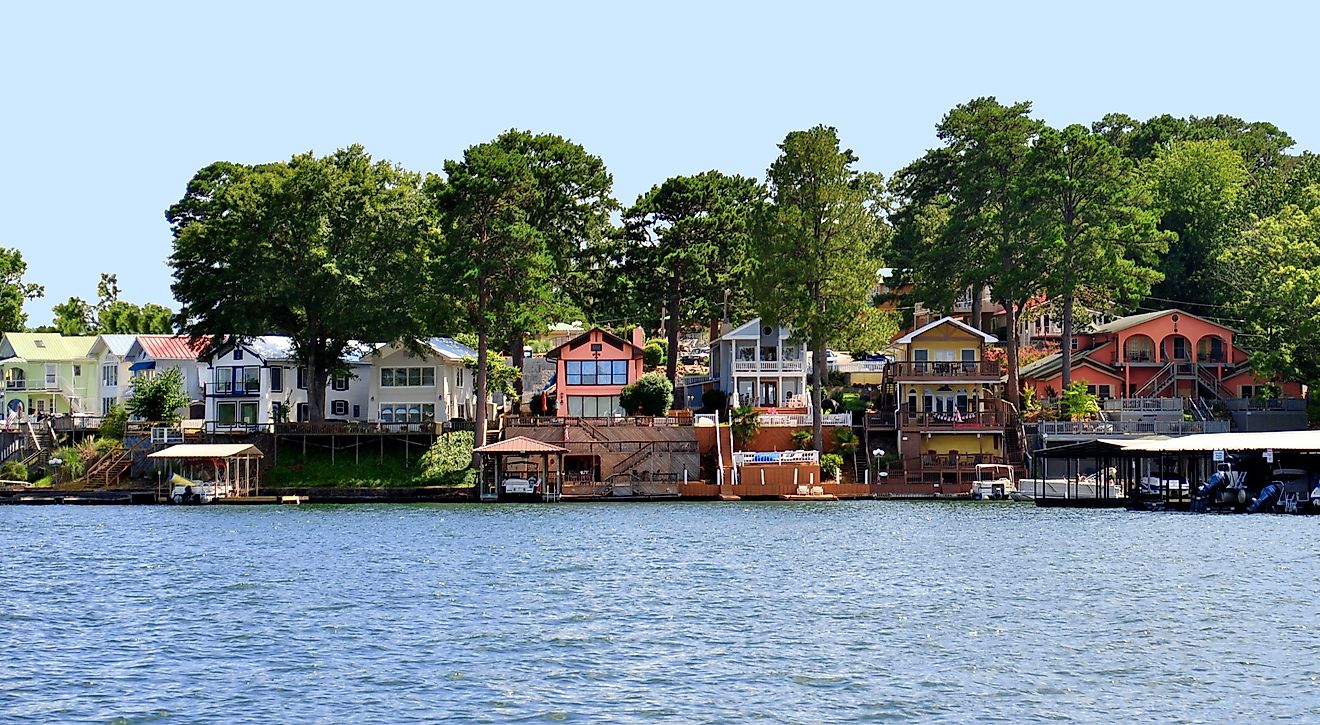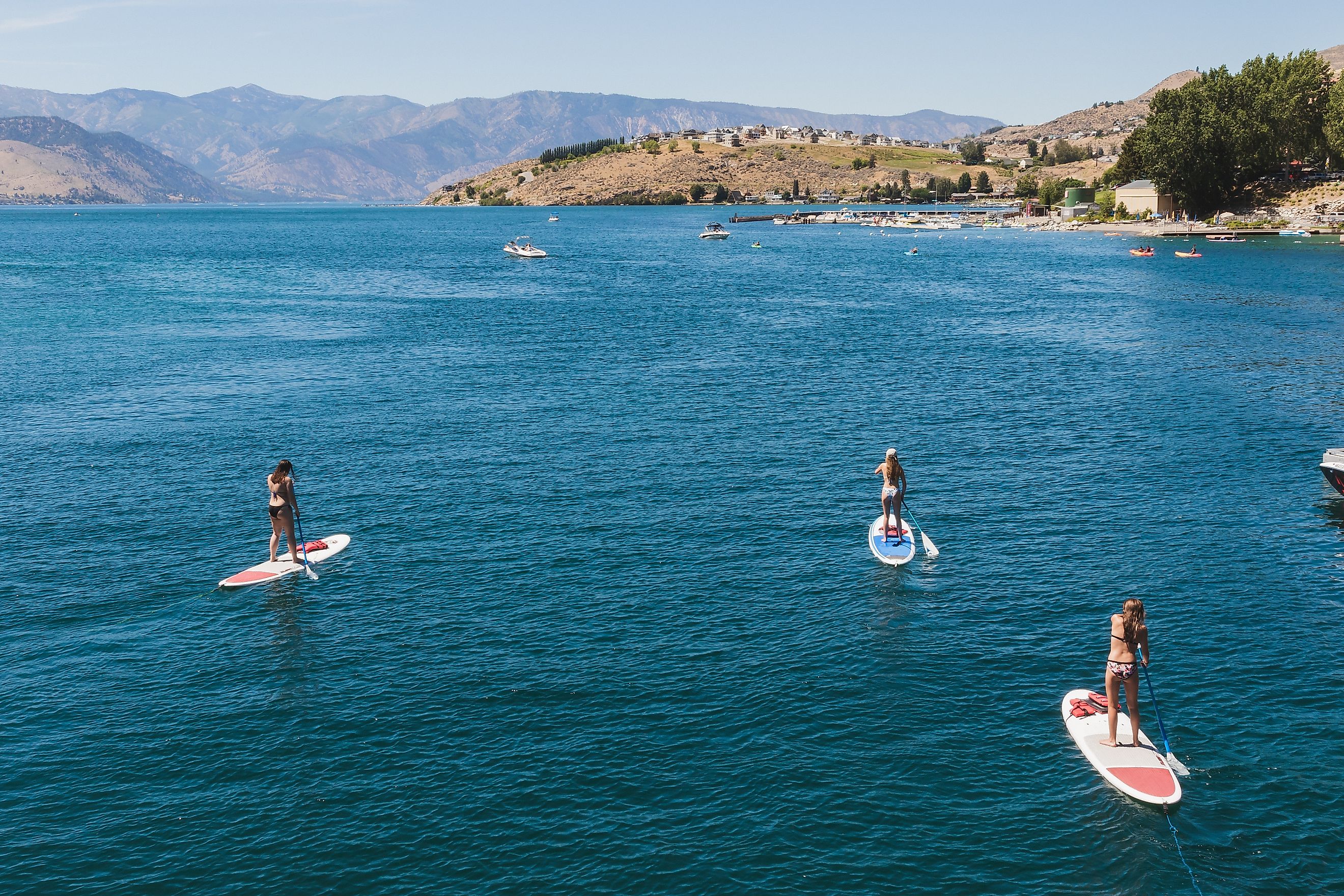
Lake Chelan
Lake Chelan is not just a lake. It is a ribbon of glacial water stretching for more than 50 miles through the heart of north-central Washington, flanked by soaring peaks and a landscape that feels both timeless and alive. At first glance, its long, narrow shape resembles a Norwegian fjord, but this is a uniquely American treasure, one that combines deep natural history, vibrant communities, outdoor adventure, and a touch of wine country charm.
This remarkable body of water has been attracting travelers, explorers, and nature lovers for more than a century. Today, it remains one of Washington’s most beloved destinations, offering a rare mix of remote wilderness at one end and thriving lakeside towns at the other. If you have ever wondered why Lake Chelan stands apart, its story is as deep as its waters.
Where Exactly Is Lake Chelan?
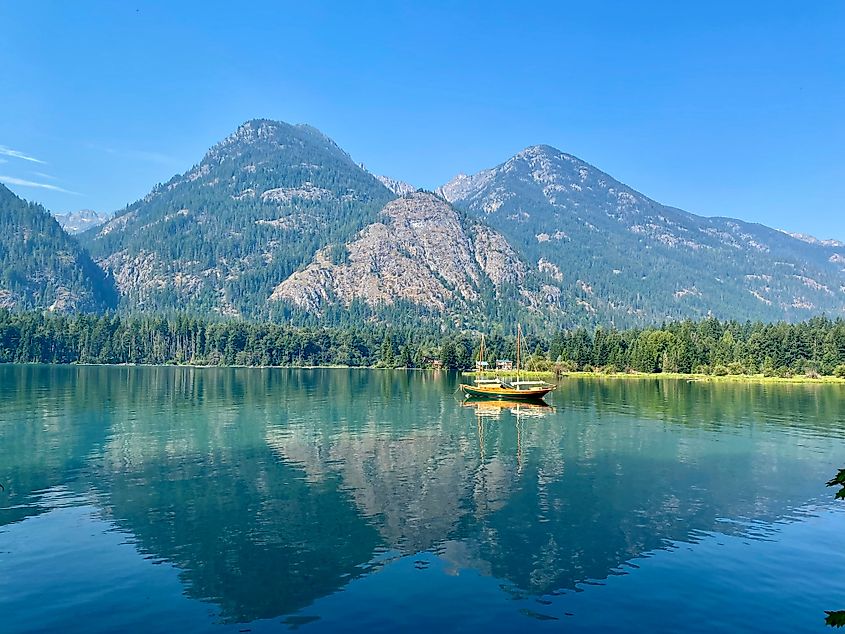
Located in Chelan County, Washington, Lake Chelan stretches from the town of Chelan at its southern end to the tiny community of Stehekin at the northern tip, near the edge of North Cascades National Park. At 50.5 miles long, the lake carves its way through rugged terrain shaped by powerful Ice Age glaciers.
The average width is only about 1.3 miles, making it feel intimate despite its impressive length. But what truly makes Lake Chelan stand out is its depth. At its deepest point, the lake plunges to 1,486 feet, making it the third deepest lake in the United States after Crater Lake in Oregon and Lake Tahoe on the California-Nevada border. Its deepest reaches sink to 388 feet below sea level, creating a dramatic vertical contrast with the surrounding peaks that rise thousands of feet above.
A Landscape Carved by Ice
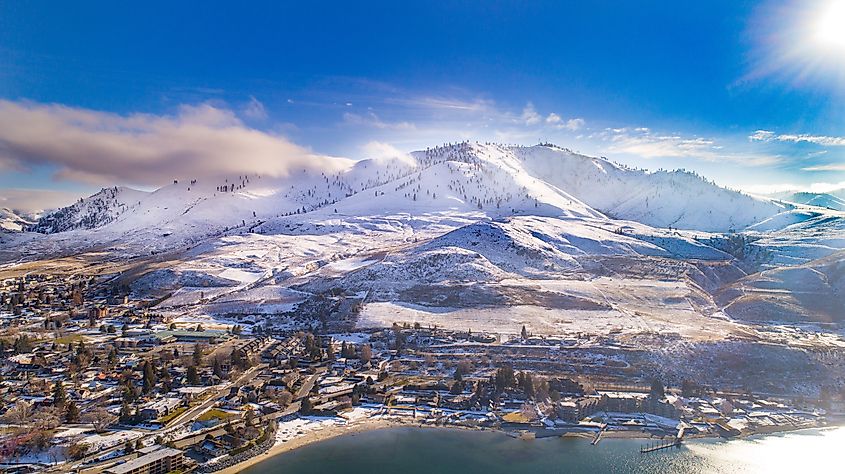
Lake Chelan’s story began thousands of years ago during the Pleistocene Epoch, when massive glaciers repeatedly advanced and retreated through this valley. The most recent glaciation, about 21,000 years ago, left behind the dramatic overdeepened trough that we see today. As the Skagit Lobe of the Cordilleran ice sheet pushed through, it carved the upper Lucerne Basin, while another lobe from the Columbia River drainage shaped the lower Wapato Basin. These glaciers sculpted steep walls, left behind moraines, and scattered enormous basalt boulders known as glacial erratics across the region.
Today, the lake is essentially two basins connected by a narrow channel known simply as “the Narrows.” The lower Wapato Basin, closer to the town of Chelan, is shallower and warmer, with a maximum depth of about 400 feet. The upper Lucerne Basin is the true giant, holding more than 90 percent of the lake’s water and plunging to its maximum depth.
A Tale of Two Ends: South vs North
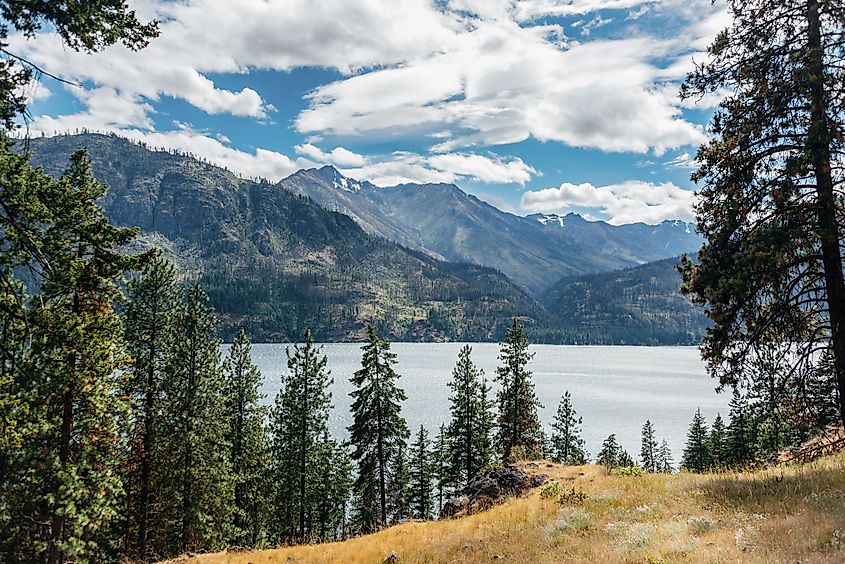
One of the most fascinating aspects of Lake Chelan is how different its two ends feel. At the southern end, the town of Chelan and the nearby community of Manson offer everything from boutique hotels to waterfront parks, marinas, and vineyards. This area receives just over 11 inches of rain per year and enjoys warm, sunny summers, making it a popular playground for boating, swimming, and wine tasting.
Travel north along the lake, however, and the landscape changes dramatically. Forests grow denser, peaks tower higher, and human presence becomes scarce. At the very tip lies Stehekin, a remote village accessible only by boat, plane, or foot. With roughly 75 permanent residents, Stehekin serves as a gateway to the Lake Chelan National Recreation Area and the greater North Cascades National Park Complex. From here, trails lead into some of the wildest and most pristine terrain in the state.
Water and Wildlife
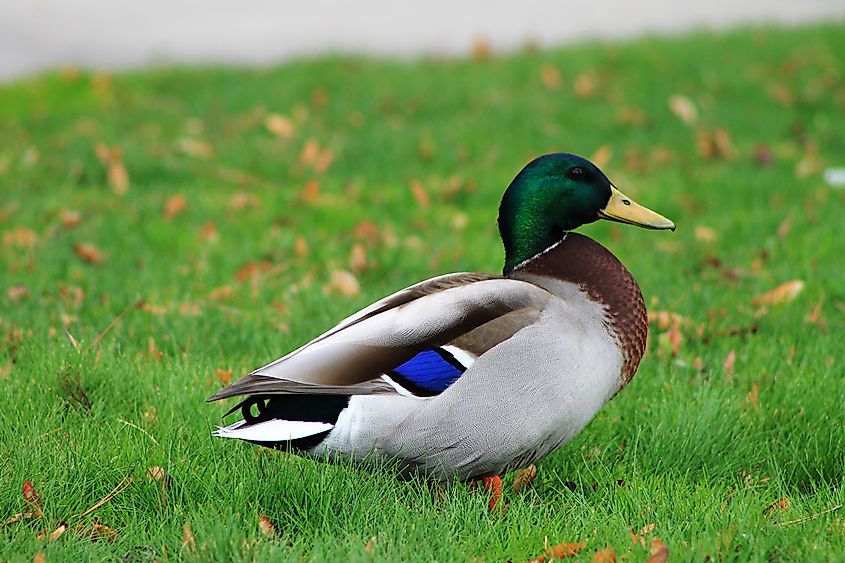
Lake Chelan is fed primarily by the Stehekin River, which provides about 65 percent of its inflow, and by Railroad Creek, which contributes around 9 percent. Snowmelt, rain, and smaller streams make up the rest. The lake’s watershed spans 924 square miles, and more than 90 percent of that land is forested, providing clean, cold water and excellent habitat for wildlife.
Birdwatchers can spot bald eagles, osprey, and a wide array of songbirds and raptors. Along the shorelines, white-tailed deer and red foxes are common, and in the surrounding forests, you might catch sight of black bears or even mountain goats in the higher elevations.
Fishing is a long-standing tradition here. Native species include bull trout, westslope cutthroat trout, and mountain whitefish, while rainbow trout, kokanee, chinook salmon, and lake trout have been introduced for sport fishing. In 2013, a lake trout weighing over 35 pounds set the state record, proving that Lake Chelan is still full of surprises.
Recreation on the Water
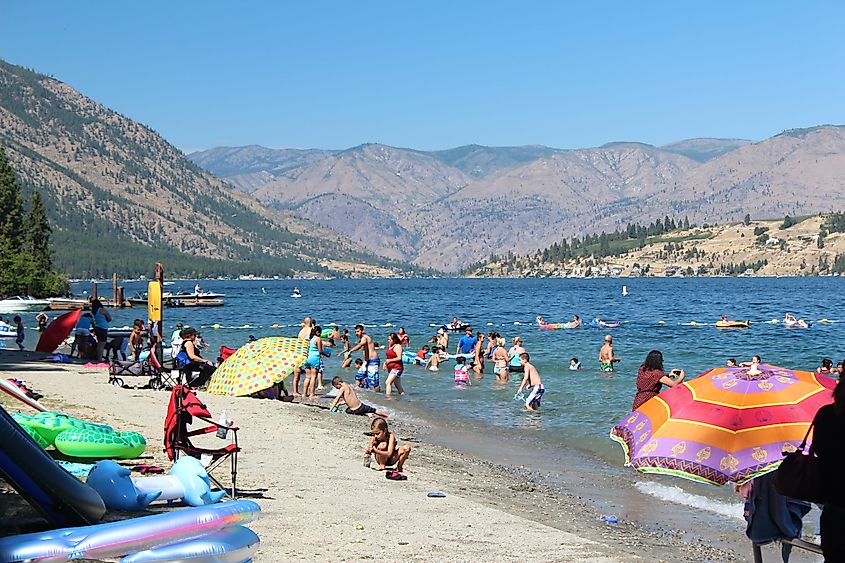
For visitors, Lake Chelan offers an almost endless menu of activities. In summer, the lake becomes a hub for boating, kayaking, paddleboarding, and swimming. Its long, narrow shape makes it ideal for scenic cruises, with daily ferries connecting Chelan and Stehekin. These boat rides are more than transportation; they are a journey through changing landscapes, from rolling hills and vineyards to remote wilderness.
Anglers can cast from the shore, launch from public docks, or book a guided fishing trip. Divers and snorkelers occasionally explore its cold, clear depths, and winter visitors sometimes find the lake shores dusted in snow, with nearby mountains drawing snowshoers and cross-country skiers.
A Wine Country Rising
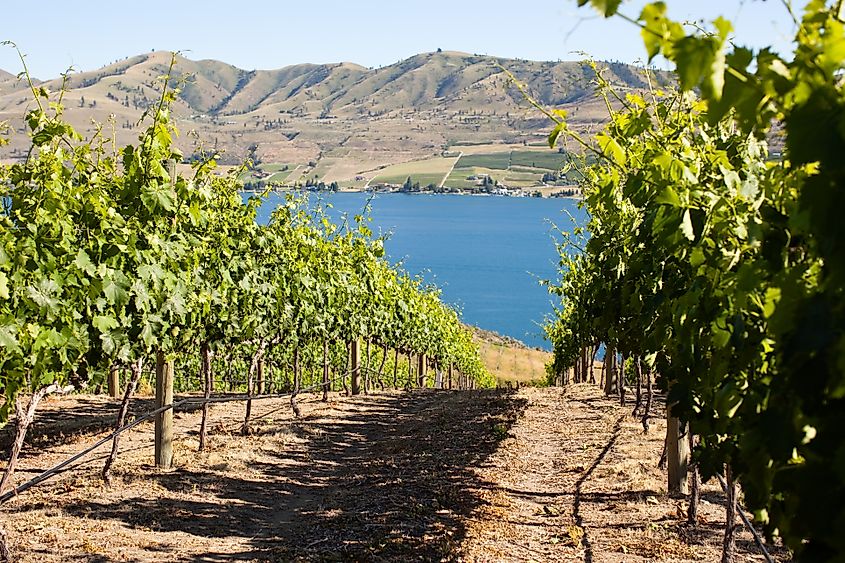
Over the past two decades, the southern end of Lake Chelan has also become a celebrated wine region. The Lake Chelan American Viticultural Area (AVA), a subregion of the larger Columbia Valley AVA, is home to over 30 tasting rooms. The volcanic soils, long sunny days, and moderating influence of the lake create an ideal environment for varietals like Syrah, Merlot, and Riesling.
Many wineries sit within view of the water, offering scenic terraces and weekend events that draw visitors year-round. This wine scene has added a new layer of sophistication to what was once a primarily boating and fishing destination.
Culture, History, and Community
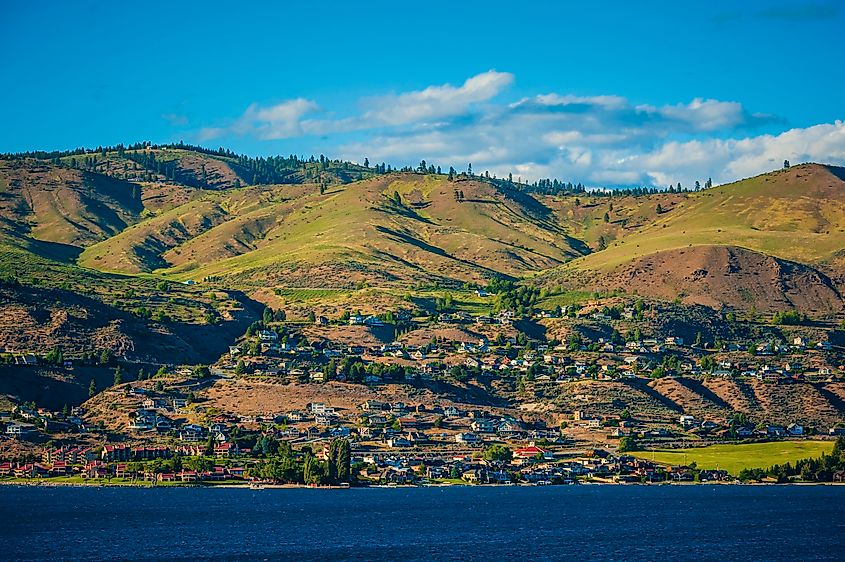
The name “Chelan” comes from the Salish word “Tsi-Laan,” meaning “Deep Water,” an apt description for this extraordinary lake. The region has been home to Indigenous peoples for thousands of years, and its name preserves a connection to that deep history.
Today, the largest community on the lake is the city of Chelan, with a population just over 4,000. Manson, nearby, is smaller but equally charming, with orchards, cideries, and lakeside resorts. Stehekin, at the opposite end, feels like a frontier outpost, where residents rely on boats, floatplanes, and creativity to keep their remote lives thriving. Nearby Lucerne serves as a dock for ferries and a jumping-off point for Holden Village, a historic mining town turned spiritual retreat center.
Protected Lands and Wilderness Access
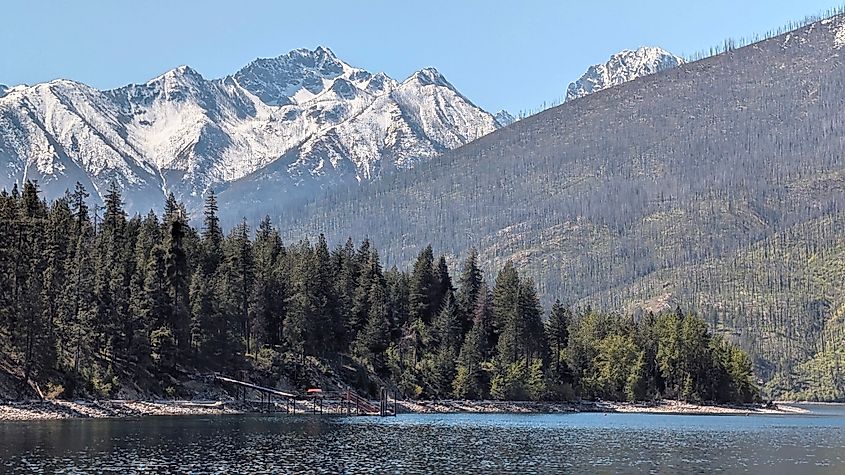
One reason Lake Chelan remains so pristine is the vast amount of protected land around it. Nearly 87 percent of its watershed is publicly owned, with large sections falling under the management of the Wenatchee National Forest, Lake Chelan National Recreation Area, and Lake Chelan-Sawtooth Wilderness. Two state parks, Lake Chelan State Park and Twenty-Five Mile Creek State Park, provide campgrounds, picnic areas, and boat launches close to the southern towns.
From Stehekin, hikers and backpackers can access some of Washington’s most dramatic terrain, including the North Cascades National Park Complex and the Stephen Mather Wilderness. Trails lead to alpine meadows, glacier-fed streams, and high passes where the view stretches across rugged peaks.
Climate: From Sun-Drenched South to Snowy North
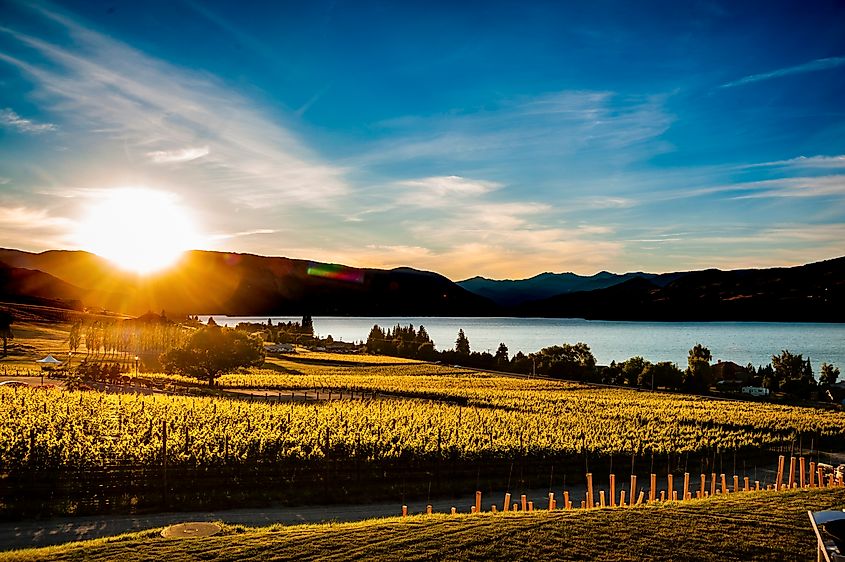
The climate along Lake Chelan is surprisingly varied. The south end sits in the rain shadow of the Cascades and enjoys hot, dry summers with mild winters. Chelan averages about 11 inches of rain and 22 inches of snow annually. At the north end, Stehekin receives more than triple the precipitation, around 35 inches of rain and over 120 inches of snow per year. This diversity creates distinct ecosystems and recreational seasons depending on where you visit.
Planning Your Trip
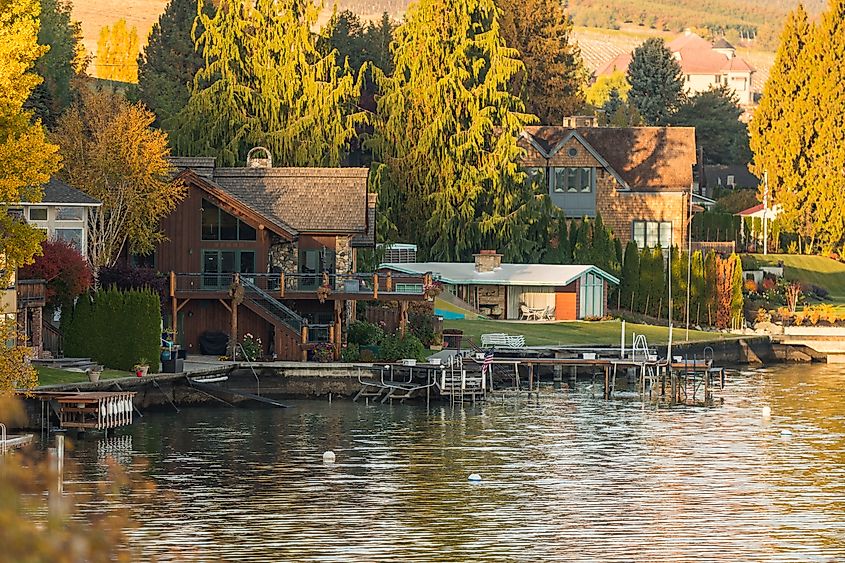
Visiting Lake Chelan is easy by Washington standards, at least to its southern towns. Chelan is a three-hour drive from Seattle or Spokane and has ample lodging options, from luxury resorts to lakeside cabins and campgrounds. Manson offers a quieter alternative with close proximity to wineries and orchards.
Reaching the northern end requires more planning. There are no roads that travel the full length of the lake. To reach Stehekin, you can book a passenger ferry, charter a boat, or take a scenic flight. Backpackers can hike in from the North Cascades via the Pacific Crest Trail or the Cascade Pass route, but this is a true wilderness adventure.
Why Lake Chelan Is Worth the Journey
Few places in the United States offer such a striking combination of depth, beauty, and diversity in one long, narrow stretch of water. Lake Chelan is a playground for boaters, a sanctuary for hikers, a haven for anglers, and a rising star in the wine world. Its fjord-like scenery rivals destinations thousands of miles away, yet it remains deeply tied to Washington’s local culture and natural heritage.
Whether you come for a weekend of tasting rooms and sunshine, or a week-long trek into the North Cascades, Lake Chelan offers an escape that feels both vibrant and wild. It is a place where modern amenities meet ancient geology, where deep waters mirror deep history, and where every bend in the shoreline offers something new to discover.
